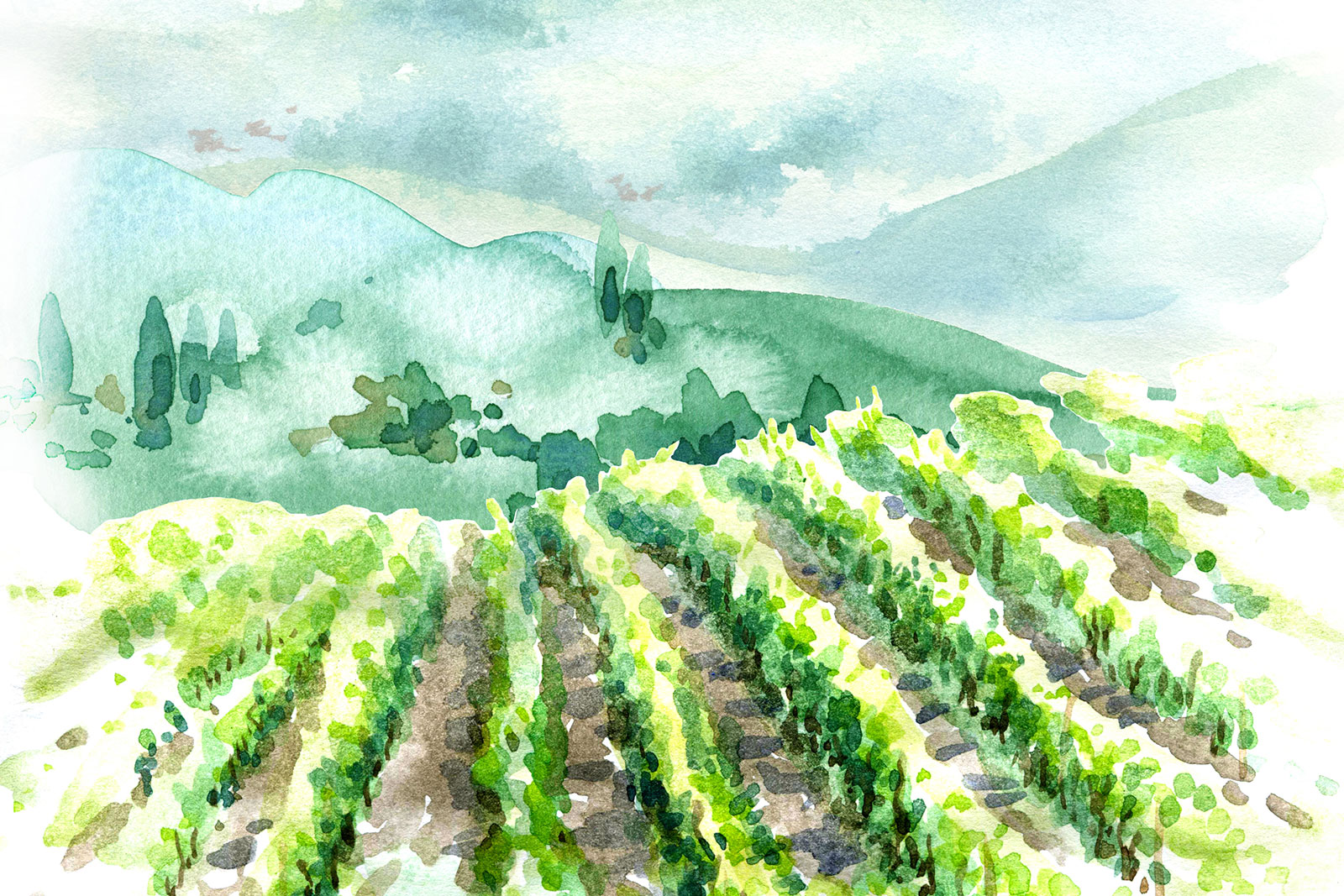Health-conscious consumers buy organic produce to reduce exposure to cancer-causing pesticides sprayed during the growing process, but consumers may not know of the hidden dangers lurking in their nightly glass of heart-healthy red wine, too.
This is why many wine drinkers are turning to organic wine. Beverage Daily, an industry news source, reports that organic wine sales almost doubled from 2012 to 2017, and by 2022, 1 billion bottles will be consumed each year. But there is more to mindful wine drinking than just purchasing a bottle labeled “organic.”
There are four popular silos of wine making: conventional, organic, biodynamic, and natural (or low-intervention). Some winemakers also include sustainable on this list. Conventional wines are those purchased in the average grocery store, produced with grapes sprayed with pesticides, with finished bottles including any number of additives to influence things like flavor, color, and acidity. The other methods—organic, biodynamic, natural, and sustainable—all produce wines that are not laden with chemicals and pesticides. Biodynamic wine production has been around since the 1920s; growers rely on compost rather than chemical fertilizer, and base harvesting schedules around a specific astronomic calendar. Natural, or low-intervention, wines are made without adding anything in the cellar, like additives, chemicals, or cultured yeasts. Sustainable wines are produced in ways that are positive for the environment and reduce waste.
Still not sold on making the switch to a healthier alternative? An April 2017 article from Smithsonian magazine notes that scientific advancements have helped inexpensive, conventional wine companies produce the delicately nuanced flavors found in more expensive wines. The Smithsonian article references a new book by Bianca Bosker, “Cork Dork,” which examines the conventional wine industry and shares scary realities such as the fact that there are people “developing wine the way flavor scientists develop the new Oreo or Doritos flavor.” Producers draw on a list of more than 60 government-approved additives that
affect taste, acidity, and color.
While these additives, ranging from egg white to defatted soy flour to sodium bicarbonate, don’t pose any health risks, the pesticides often sprayed during the growing process certainly do.
A February 2019 report from the U.S. PIRG (Public Interest Research Group) found significant amounts of the herbicide glyphosate in all but one of the popular beer and wine brands they tested. As reported in issue 4’s “One Bad Apple,” glyphosate was labeled as a “probable carcinogen” by the World Health Organization in 2015. Bayer, the new owner of glyphosate’s creator Monsanto, is currently facing a brunt of lawsuits from individuals claiming the use of glyphosate (most typically through the use of the popular weedkiller Roundup) caused their cancer.
The reason I’ve gravitated toward [sustainable wine] is because I believe that you need to look at everything you do as a business to be sustainable and to be viable and to be something that will last for generations [...] You can be an organic farmer and still destroy your environment.
-Michael Honig, president of the Honig Vineyard & Winery
As of January 2019, Roundup Pro360, a weed killer containing glyphosate, was banned by France, and other countries in the EU will consider following suit. According to a September 2019 article on TheGuardian.com, in July 2019, Austria became the first EU member to outlaw glyphosate, with use restrictions in the Czech Republic, Italy, and the Netherlands. The PIRG report states, “It is possible that even low levels of glyphosate can be problematic,” citing a study that found 1 part per trillion of glyphosate “has the potential to stimulate the growth of breast cancer cells and disrupt the endocrine system.” While more and more countries in the EU consider glyphosate (and glyphosate-containing product) bans, the United States does not seem any closer to reaching a similar conclusion. An August 2019 article on CBS.com says the Trump Administration told companies not to warn their customers about products that contain glypho-sate, despite Bayer losing three high-profile lawsuits due to harmful health effects as of May 2019.
But glyphosate isn’t the only culprit. According to the Organic Vineyard Alliance (OVA), a group of winemakers, retailers, importers, and distributors who aim to educate consumers on the benefits of wine made with organic grapes, 25 million pounds of pesticides were applied to convention-ally grown grapes in the state of California in 2010 alone. Additionally, conventionally grown grapes receive more pes-ticides than table grapes, tomatoes, and strawberries—all three fruits which appear on the Environmental Working Group’s “Dirty Dozen” list.
Organic, natural, and biodynamic grape-growing and wine-making practices all employ different methods to produce pesticide-free wine. Organic wine must first be distinguished from wine made with organically grown grapes. According to a September 2019 article from Wine Enthusiast magazine, wines that carry a certified-USDA organic seal have strict regulations: “The grapes are grown without the use of synthetic fertilizers, and all ingredients going into these wines, including yeast, must be certified organic. No sulfites may be added to these wines, although some that occur naturally are permitted.” Wines made with organically grown grapes, however, do not need to exclusively include organic ingredients.
But some consumers might be buying strictly for the label, without realizing there may be healthier alter-natives than organically labeled wine. Napa Valley’s Honig Vineyard & Winery practices sustainability, first and foremost. “The reason I’ve gravitated toward [sustainable wine] is because I believe that you need to look at everything you do as a business to be sustainable and to be viable and to be something that will last for generations,” says Michael Honig, president of the vineyard and winery. “You can be an organic farmer and still destroy your environment.” Though Honig is quick to point out that he does not intend to be critical of other wine producers, his winery never sought organic certification, because he didn’t believe organic practices created the best product. “Ultimately, the idea is we need to create a healthy environment, but not just a healthy environment for our vineyard,” he says. “The things we’re doing in our vineyard are creating a more flavorful grape.”
Honig Vineyard & Winery employs sustainable practices in every way, from utilizing solar energy to sourcing lighter weight wine bottles to outfitting the vineyard with electric cars. Honig even spearheaded a project with the Assistance Dog Institute in Santa Rosa, California—the Institute trained “sniffer dogs” to detect the potent mealybug, the practice of which can help alleviate the broad use of pesticides.
“As consumers get more knowledgeable about what these [labels] mean, [they’ll realize] there are other certifications that may be more applicable to what they care about,” says Honig. Regardless of whether or not conventionally produced wine has a better chance of giving you a headache, there are extensive reasons to do your research and pick the type of wine that best suits your lifestyle. Be it organic, sustainable, natural, or biodynamic, a grape that has been grown with care and attention is sure to produce a very fine wine indeed.







